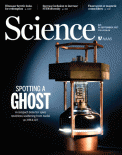 Science has issued an expression of concern for a widely covered materials science paper published on Friday, citing issues with the supplementary data.
Science has issued an expression of concern for a widely covered materials science paper published on Friday, citing issues with the supplementary data.
The paper — which caught the attention of multiple news outlets — added properties to cotton fibers in vitro, potentially enabling researchers to manufacture fabric that can fluoresce or carry magnetic properties.
The move to issue an expression of concern was unusually quick. According to the journal, an expert who received the paper from a journalist under a media embargo contacted Science to flag issues in some of the supplementary data. At the time of this post, the paper does not yet have an entry on PubPeer.
Here’s the full expression of concern:
In the 15 September issue, Science published the Report “Biological fabrication of cellulose fibers with tailored properties” by F. Natalio et al. (1). After the issue went to press, we became aware of errors in the labeling and/or identification of the pigments used for the control experiments detailed in figs. S1 and S2 of the supplementary materials. Science is publishing this Editorial Expression of Concern to alert our readers to this information as we await full explanation and clarification from the authors.
A spokesperson for Science told us:
The [Editorial Expression of Concern] originated from a discussion with an individual who contacted the journal after seeing the paper under embargo from a journalist. This alerted the editors to errors in the labeling and/or identification of the pigments used for the control experiments detailed in figs. S1 and S2 of the Supplementary Materials.
Science is now currently awaiting full explanation and clarification from the authors. We hope to resolve this issue quickly.
According to the information available on the abstract, the paper was submitted May 15 and accepted August 21 after two rounds of peer review.
We asked the spokesperson if the journal was disappointed the issues weren’t caught during peer review, and if the reviewers had access to the supplementary material. She told us:
Science is committed to thorough and efficient evaluation of submitted manuscripts. As part of the peer-review process, the reviewers have access to all figures/tables and supplementary material.
The results of the paper as published were reported by multiple news outlets, including Science‘s news section, Forbes (which suggested it may be the “biggest advance in cotton technology since Eli Whitney’s gin”), and Discover.
First and corresponding author Filipe Natalio is based at the Weizmann Institute of Science in Israel. Last author Hans-Jürgen Butt is a director at the Max-Planck-Institute for Polymer Research, and the ombudsperson of the Chemistry, Physics, and Technology section of the Max Planck Society.
Update, 14:01 GMT September 20, 2017: We’ve heard from last author Butt, who told us they are preparing to submit an erratum to the journal:
Let me assure you that none of the conclusions of the paper is affected.
Like Retraction Watch? Consider making a tax-deductible contribution to support our growth. You can also follow us on Twitter, like us on Facebook, add us to your RSS reader, sign up on our homepage for an email every time there’s a new post, or subscribe to our daily digest. Click here to review our Comments Policy. For a sneak peek at what we’re working on, click here.
This might be a record setting time for an Expression of Concern.
Editors certainly should use the EoC mechanism to alert readers as soon as there is a credible concern identified regarding the data of a paper (high profile or not).
COPE should modify it’s policy on EoC as well – the current COPE flowchart gives institutions and authors too much opportunity to stonewall concerning data. Here, Science acted while still awaiting a “full explanation and clarification from the authors.” That’s doing the right thing for the readers.